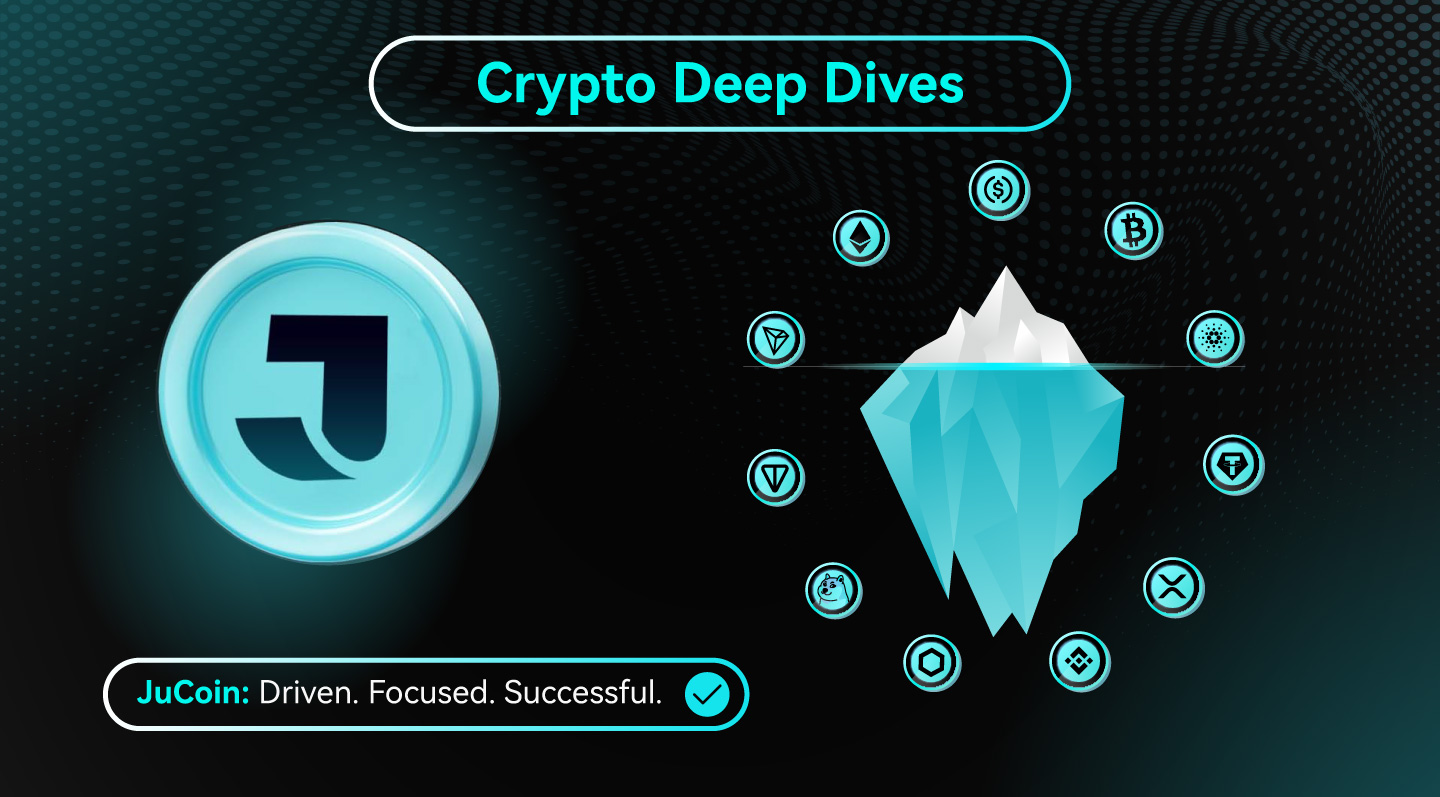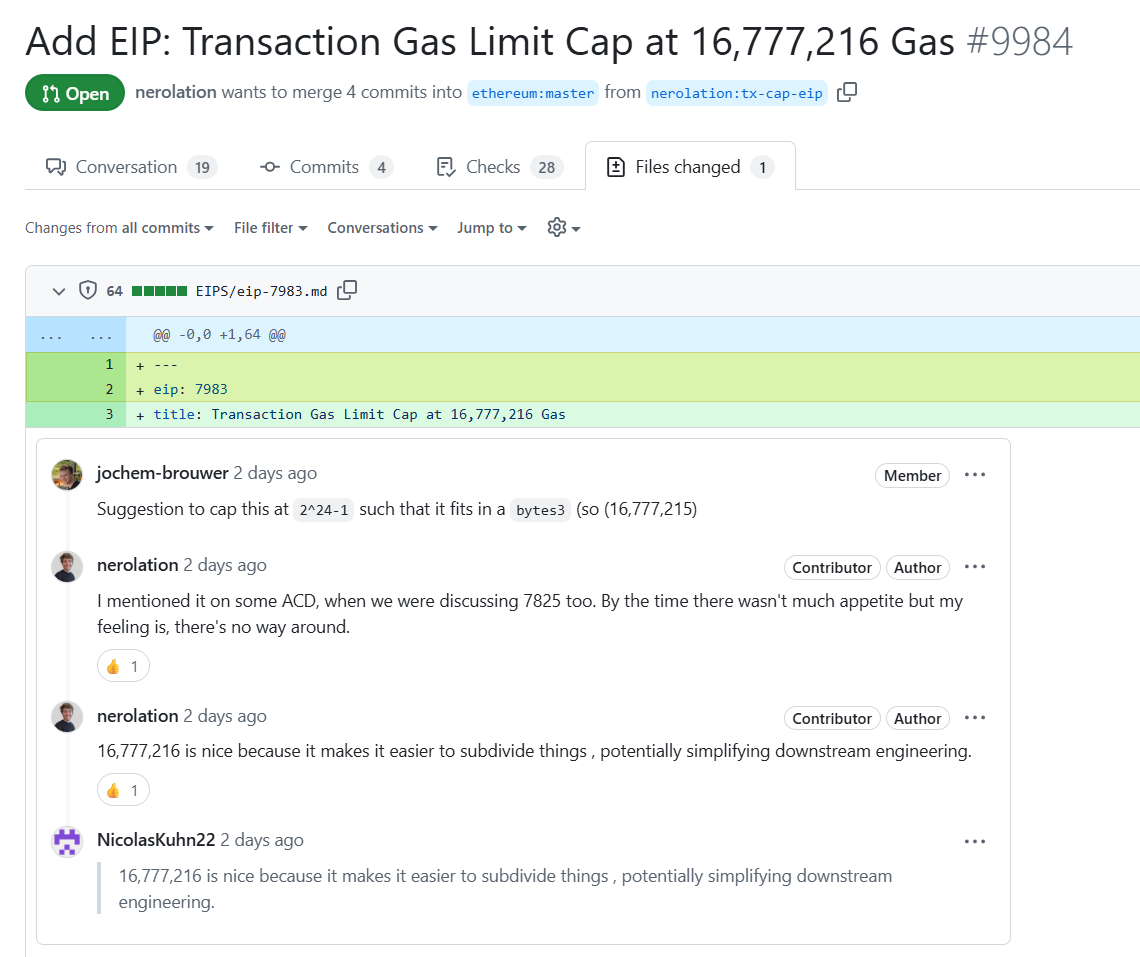
Key Takeaways
- EIP-7983 proposes a protocol-level cap of 16,777,216 gas (2²⁴) per transaction to enhance Ethereum’s performance and resilience.
- This cap aims to mitigate certain DoS risks, improve network stability, and foster compatibility with next-generation execution environments like zkVMs.
- The proposal, authored by Vitalik Buterin and Toni Wahrstätter, is part of Ethereum’s broader push toward simplicity and modularity at the base layer.
Ethereum continues to evolve as developers seek ways to boost scalability, efficiency, and security across the network. A new proposal, EIP-7983, has entered community discussion, aiming to set a hard cap on gas consumption for individual transactions. This Crypto Deep Dives article discusses what you need to know about this development and its potential implications.
What is EIP-7983?
EIP-7983, authored by Ethereum co-founder Vitalik Buterin and researcher Toni Wahrstätter, proposes a protocol-level maximum gas limit of 16,777,216 (2²⁴) for any single transaction on the Ethereum mainnet. Today, a single transaction can theoretically consume the entire block’s gas limit, which can create execution inefficiencies, uneven load distribution, and open up potential denial-of-service (DoS) attack vectors. The proposal introduces a hard cap so that no transaction can exceed this gas usage, regardless of the block gas limit set by validators or miners.

Motivation Behind the Gas Cap
The motivation for EIP-7983 is multi-faceted:
- Network Stability: Limiting transaction gas usage reduces the risk of a single transaction overwhelming the network, ensuring fairer and more predictable resource allocation.
- DoS Mitigation: By capping gas usage, Ethereum becomes less susceptible to attacks that exploit excessively large or complex transactions, as seen in historical DoS incidents.
- Execution Layer Simplification: As Ethereum embraces modularity and parallel execution (e.g., with zkVMs and future multithreaded architectures), splitting large transactions into smaller ones enhances system efficiency and developer experience.
- zkVM Compatibility: Many zero-knowledge execution environments benefit from smaller, evenly-sized transactions, which can be parallelized more easily than monolithic ones.
How Will EIP-7983 Work?
The proposed changes would be enforced at the protocol level:
- Any transaction specifying a gas limit above 16,777,216 will be rejected during both txpool and block validation phases.
- This cap is independent of the block gas limit—miners and validators can still adjust total block gas limits as usual.
- Transactions that would previously consume an entire block’s gas must be split into smaller transactions to comply.
Potential Benefits
- Greater Network Predictability: Node operators and validators can expect more uniform and stable block processing times, reducing risk of delayed execution or node desynchronization.
- Improved Security: Hard limits on resource consumption help protect the network from DoS and resource exhaustion attacks.
- Enhanced Modularity: This change aligns with Ethereum’s trajectory toward modular execution and greater compatibility with advanced technologies like zero-knowledge proofs.
Challenges and Considerations
- Backward Compatibility: The proposal is not backward-compatible for transactions that specify a gas limit above the cap. However, most current transactions fall well below this threshold, so impact is expected to be minimal.
- User and Developer Experience: Some complex smart contract deployments and advanced DeFi operations may require additional effort to split into multiple transactions, potentially raising the barrier to certain advanced use cases.
- Implementation Complexity: Clients, wallets, and developer tools will need updates to accommodate the new validation logic and UI feedback for users attempting to submit large transactions.
- Partial Solution to DoS: While EIP-7983 helps mitigate execution-related DoS risks, it does not address all mempool-based attack vectors, such as those exploiting transaction sorting or mempool occupation with high gas transactions.
Community Discussion and Alignment with Ethereum’s Roadmap
EIP-7983 follows the trajectory of earlier proposals, such as EIP-7825, to introduce resource boundaries at the execution layer. It is also consistent with Vitalik Buterin’s recent calls to simplify Ethereum’s base protocol, improving efficiency, security, and accessibility, and preparing the network for further modularization and scaling.
Conclusion: Balancing Efficiency and Complexity for the Next Era
EIP-7983 is an important step in Ethereum’s ongoing pursuit of a more stable, scalable, and secure base layer. By introducing a cap on transaction gas usage, the proposal seeks to balance the need for robust DeFi and smart contract functionality with the growing demands of execution efficiency and network stability.
While the proposal has sparked debate—supporters highlight its necessity for a more modular, performant Ethereum, while skeptics note the additional complexity for power users—its ultimate value will be determined by community feedback and real-world implementation.
As Ethereum prepares for new layers of scaling and execution, including zkVMs and more parallelized architectures, EIP-7983 represents a proactive approach to protocol design, shaping the future of smart contract execution on the world’s largest programmable blockchain.






